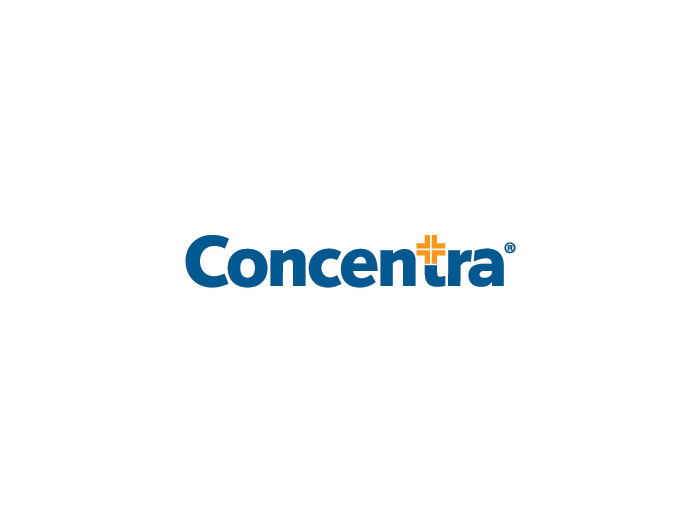Surety
Taking the Tedium out of Surety Reports

Construction surety is about to get significantly more sure. Two trade groups, the National Association of Surety Bond Producers (NASBP) and the Surety & Fidelity Association of America (SFAA) are working with two standards-setting organizations and several underwriters to develop a whole new online protocol.
In trials, the new protocol reduced input time on contractor work-in-progress (WIP) reports from 30 minutes to about two seconds, and reduced transcription errors to zero. That new system is being rolled out for commercial scale testing later this year.
“Our industry has been way behind in this regard,” said Greg Davenport, senior vice president of global operations for Liberty Mutual Surety, and chair of the implementation subcommittee under NASBP that is a collaborative function with SFAA. Prior to his current position, Davenport was chair of the SFAA e-business advisory committee for 10 years.
As far back as the ’70s, the insurance business implemented standards established by the Association for Cooperative Research & Development (ACORD). Similar standards were brought into surety in 1996, Davenport recalled.
“We had always wanted to implement other standards, including those for financial data, and we thought of XBRL for those.”
XBRL is the organization that established the standards by which publicly traded firms report their financial data to the Securities and Exchange Commission. It is also used by banks reporting to the Federal Deposit Insurance Corporation.
“We have only been able to connect with XBRL in the past few years,” Davenport noted, “but are now ready to launch with the XBRL financial data standard as well as four new ACORD standards: report of execution [on a bond], construction bond requests, commercial bond requests, and addenda for those forms.”
A Giant Leap Ahead in Technology
He is optimistic that the financial data standards will be a compelling improvement that will drive the adoption of other standards across the business.
Robert Coon, chairman of the automation and technology committee of NASBP and vice president of surety at Scott Insurance, emphasized the speed, efficiency and accuracy of the XBRL system.
“It is a significant improvement in that surety has historically been a manual process. When I joined an agency from underwriting in 1999, the first thing that I did was buy a typewriter.”
Every contractor provides WIP reports to its surety every quarter.
“That is a huge effort to input,” Coon lamented. “It is tedious and extraordinarily error prone. We tried to get a broad cross-section of industry so that we had all data elements.”
He noted that there was also input from the Construction Financial Management Association.
“Now that we have this XBRL standard,” said Coon, “the focus will be on getting sureties to accept data in that format and to get some software vendors to be able to implement it as an export option just like a PDF or spreadsheet.
“Every software provider has indicated that this will be a fairly easy addition. Hopefully we will see full implementation across the industry over the next two to three years.”
Consensus was the key, said Joe Orgovan, director of information technology at SFAA.
“We have been looking at data standards for decades. Our members have their systems, contractors have theirs, agents and brokers have theirs. The ACORD standards have been in place since the ’70s and there was a big push in the ’90s to fine-tune that for surety, including construction. Just in the last two or three years have we been able to make use of the existing XBRL financial standards.”
There is an initial investment in coding time, but after that it’s all gravy.
“One member told me his developers took eight hours to do the programming internally. That is one day of work. Now intake of WIP reports takes two seconds, versus what used to take half an hour.”
“We have been looking at data standards for decades. Our members have theirs, contractors have theirs, agents and brokers have theirs.” — Joe Orgovan, director of information technology, SFAA
The arithmetic is compelling. After 16 reports, the new protocol is saving time. Considering that one small contractor can submit a few dozen reports each quarter, and a large contractor can file hundreds, that is about as close to instant return on investment as possible.
“A few obligees will always stick with their own process, but SFAA has always been very vocal in supporting data standards. With the proof-of-concept trials we are now moving into the education phase across the industry.
“There is a huge potential return on investment here. The current process is time consuming, requires rekeying of data which increases chance of error, increases response time and ultimately costs more money. The XBRL standard is seamless. It increases efficiency, and reduces errors, expense, and response time.”
Rick Ciullo, COO for The Hartford Bond, said that his firm “went all in on the XBRL technology” for accuracy and efficiency, but also because it enables better deployment of capacity.
“When we have transparency through the WIP reports to the contractor, we can be sure of the correct amount of capacity for each client. Everyone benefits from that transparency. When underwriters have the best information, they can price correctly.”
John Gray, director of digital transformation for The Hartford’s specialty commercial operations concurs with the importance of consensus.
“We toyed for years with the idea of our own system for WIP ingestion, but decided against it without adoption by contractors. Our interest in the SFAA and NASBP initiative is that they pushed it as an industry need. They had the working group develop the taxonomy with XBRL. We provided the resources of The Hartford information technology department to the proof-of-concept trials.”
Gray elaborated on the distinction between the two types of data standards. “ACORD is the standard for transmitting transactional information. This is booking-level information. That was expanded to support surety standards, but there was no major uptake. As we talked about WIP data and taxonomy, we realized there was a better alignment with established financial reporting.”
He recalls a demonstration at a recent NASBP meeting.
“We had a shoddy wi-fi connection and the WIP upload took about five seconds. We thought it was embarrassing, but all the delegates were impressed.”
The human element also benefits from the tech wizardry, said Ciullo.
“Customers expect their underwriters to know them. We want to spend our time and effort and money thinking and analyzing risks, not inputting data.”
Gray confirms that The Hartford “is committed. We are testing internally now. We have quarterly upgrade cycles, so we expect to implement on one of those cycles, either later this year or early in 2018.”
In addition to The Hartford and Liberty Mutual, Travelers, AIG, and Zurich are involved in the project, said Michelle Savage, vice president of communications for XBRL. She estimated that implementation would pay for itself after 110 WIP reports.
XBRL originally stood for extensible business reporting language. Savage notes that there was more efficiency sought than just adopting an existing standard. When XBRL was first developed, the initial taxonomy built out of definitions in generally accepted accounting principles grew to 15,000 terms. The special taxonomy for contractor surety reporting only had to add 70 new terms to that.
“It is a significant improvement in that surety has historically been a manual process.” — Robert Coon, chairman, automation and technology committee, NASBP
“There is a lot of financial data, a huge amount of information,” said Savage. “Up to this point it has mostly been in portable-document format [PDF] or in a spreadsheet. The goal is to have a XBRL format for exporting documents.”
Even though the change in data standards and format is revolutionary, the emphasis from the start has been to evolve and expand from the existing practices.
“We followed the ACORD standards, but I believe that we and Travelers were the only ones to implement those fully,” for construction surety, said Liberty Mutual’s Davenport.
He was quick to add that was just an observation, not a criticism. “There were lots of enhancements that people wanted. Things like electronic transfer for requests for bids, for bid results, financial standards. But there was no point in going on with the other standards when only a few were implementing the most basic reports of execution. What has changed now is that we have XBRL on the scene.”
Davenport is confident that the adoption of a simple fix to a ubiquitous problem with a compelling business case will lead to further electronic upgrades. “My hope is that we, as an industry, can build more adoption and implementation for other standards.”
Once the materials have been made available, Davenport sees natural uptake. “The standard forms will allow contractors to send their information to carriers with the push of a button. At the other end, they will be converted to the carriers’ own systems.
“This is groundbreaking in surety. But frankly it is hard to believe that here we are in 2017 and we are still rekeying. That can now change.”
There is more to the change than just saving time and money. Davenport emphasized the importance of responsiveness.
“Carriers can better manage exposure. They can allocate appropriate capital to specific clients.”
Coon, of NASBP, also noted the benefits.“This not just about savings. XBRL is already the financial standard worldwide, and surety is very financially focused.”
It is also important that while the new process is a data standard, it does not limit use of the data by insurers.
“This is a reporting standard, not software,” said Coon. “It does not affect what anyone does with the data.
“We tried to get a broad cross-section of the industry to get all data elements, define the sets and standards,” he continued. “Now we are out there trying to educate contractors and sureties to gain adoption. This is a huge enhancement.”
As part of that effort, XBRL will hold a free, half-day forum on Nov. 1, “Smart Data, Better Results” for investors, analysts, and regulators, as well as data and analytical tool providers. The event is hosted by Baruch College’s Zicklin School of Business in the Newman Conference Center, in Manhattan, with sponsorship by CFA Institute and CFA Society New York.
The program will emphasize practical information on using structured, automated smart data to perform better analysis. Speakers on the agenda include representatives from CFA Institute, Morgan Stanley, and the SEC, as well as several XBRL startup analytical tool providers. &













